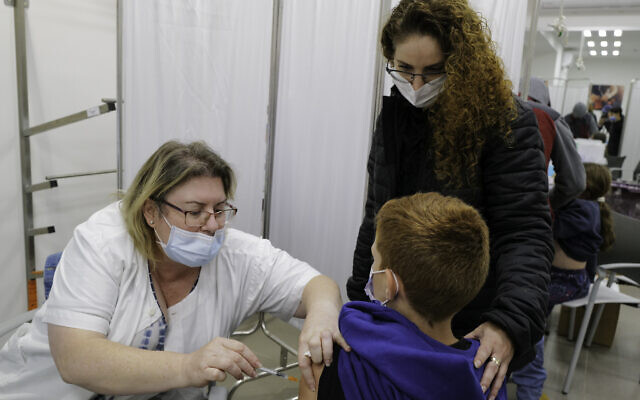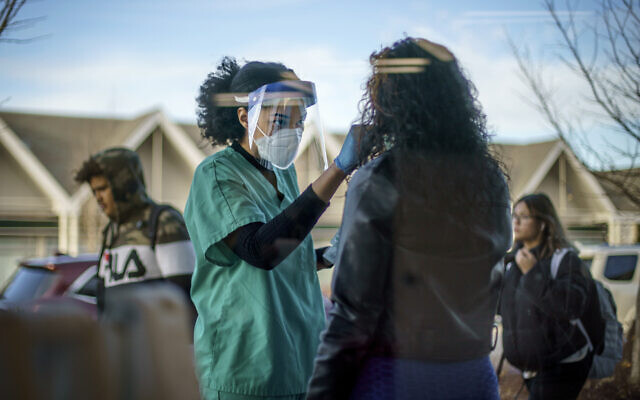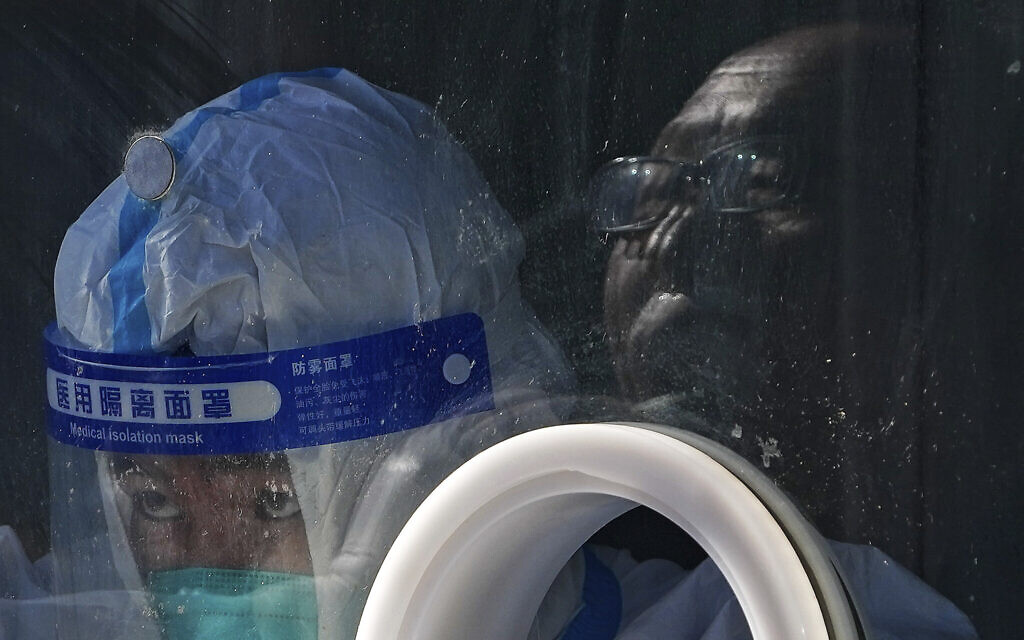AP – Scientists and health officials around the world are monitoring a descendant of the Omicron variant that has been found in at least 40 countries, including the United States.
This version of the coronavirus, which scientists call BA.2, is widely considered stealthier than the original Omicron version because particular genetic traits make it a little harder to detect. Some scientists fear that it is also no longer contagious.
But they say there’s still a lot they don’t know about it, including whether it evades vaccines better or causes more severe disease.
Where did it spread?
Since mid-November, more than three dozen countries have uploaded nearly 15,000 BA.2 gene sequences to GISAID, a global coronavirus data-sharing platform. As of Tuesday morning, 96 of these sequenced cases were from the United States
“So far, we haven’t seen it start to gain traction” in the United States, said Dr. Wesley Long, a pathologist at Houston Methodist in Texas, who has identified three cases of BA.2.
The mutant seems much more common in Asia and Europe. In Denmark, it accounted for 45% of all COVID-19 cases in mid-January, up from 20% two weeks earlier, according to the Statens Serum Institut, which reports to Denmark’s health ministry.
A healthcare worker treats a patient with Covid-19, in the intensive care unit (ICU) of the Bellvitge University Hospital in Barcelona on January 19, 2022 (Josep LAGO / AFP)
What do we know about this version of the virus?
BA.2 has many mutations. About 20 of them in the spike protein that nails the outside of the virus are shared with the original Omicron. But it also has additional genetic changes not seen in the initial release.
It’s unclear how important these mutations are, especially in a population that encountered the original Omicron, said Dr. Jeremy Luban, a virologist at the University of Massachusetts Medical School.
For now, the original version, known as BA.1, and BA.2 are considered subsets of Omicron. But world health leaders could give it its own name in Greek letters if it is considered a “variant of concern” of global importance.
The rapid spread of BA.2 in some places raises fears that it could take off.
“We have indications that it might be as infectious or perhaps slightly more infectious than the (original) Omicron, as it is able to compete with it in some areas,” Long said. “But we don’t necessarily know why.”
An initial analysis by scientists in Denmark shows no difference in hospitalizations for BA.2 compared to the original Omicron. Scientists are still studying the infectivity of this version and the effectiveness of current vaccines against it. It’s also unclear how well the treatments will work against it.

Children aged 5 to 11 receive a COVID-19 vaccine at a Clalit vaccination center in the Golan Heights town of Katzrin on December 16, 2021. (Michael Giladi/Flash90)
Doctors also don’t know for sure if someone who once had COVID-19 caused by Omicron can get sick again from BA.2. But they hope, in particular, that a previous infection with omicron could lessen the severity of the disease if someone subsequently contracts BA.2.
The two versions of Omicron have enough in common that it’s possible that an infection with the original mutant “gives you cross-protection against BA.2,” said Dr Daniel Kuritzkes, an infectious disease expert at the Brigham and Women’sHospital.
Scientists will run tests to see if antibodies from an infection with the original Omicron “are able to neutralize BA.2 in the lab and then extrapolate from there,” he said.
To what extent are health agencies involved?
The World Health Organization classifies Omicron overall as a variant of concern, its most serious designation of a coronavirus mutant, but it does not single out BA.2 with its own designation. Given its boom in some countries, however, the agency says investigations into BA.2 “should be given priority.”
The UK Health Safety Agency, meanwhile, has designated BA.2 as a “variant under investigation”, citing the growing number of cases in the UK and around the world. Yet the original Omicron version remains dominant in the UK

Maya Goode, a COVID-19 technician, performs a test on Jessica Sanchez outside Asthenis Pharmacy in Providence, Rhode Island on December 7, 2021. (AP Photo/David Goldman, File)
Why is it more difficult to detect?
The original version of Omicron had specific genetic characteristics that allowed health officials to quickly differentiate it from Delta using a certain PCR test due to what is known as “S gene target failure” .
BA.2 does not have this same genetic quirk. So when tested, Long said, BA.2 looks like Delta.
“It’s not that the test doesn’t pick it up; it just doesn’t look like Omicron,” he said. “Don’t feel like ‘stealth Omicron’ means we can’t detect it. All of our PCR tests can still detect it. »
What should you do to protect yourself?
Doctors are advising the same precautions they’ve always taken: Get vaccinated and follow public health advice about wearing masks, avoiding crowds and staying home when sick.
“Vaccines still offer a good defense against serious illness, hospitalization and death,” Long said. “Even if you’ve had COVID 19 before – you’ve had a natural infection – the protection from the vaccine is even stronger, longer lasting, and actually…works well for people who have been infected before.”
The latest release is another reminder that the pandemic is not over.
“We all wish this was over,” Long said, “but until we vaccinate the world, we risk seeing new variants emerge.”

